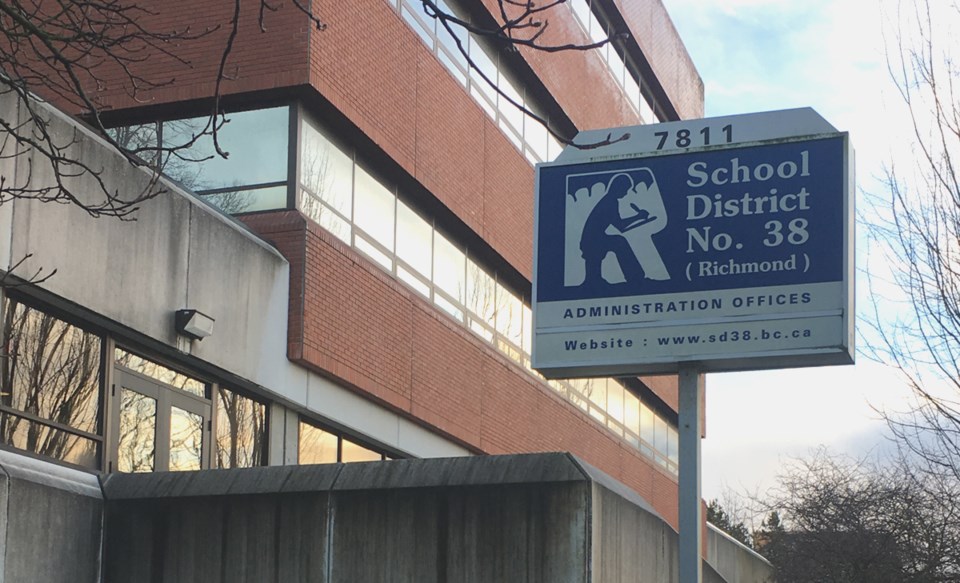When Hieu Pham Fraser arrived in Canada at the age of eight from Viet Nam, she was put into a kindergarten class for half the day and a segregated ESL class for the other half of the day.
It’s a memory that left an impact on Fraser, who now works for the Richmond school district as a district curriculum coordinator.
“That made me feel very isolated,” she told the Richmond board of education, but things have come a long way, and, today, students are always put in age-appropriate classes with support, she added.
But there are other ways teaching English to newly arrived students could be improved she told the Richmond school board in early January.
Fraser was speaking to the board of education about the need for more resources for English Language Learner teaching — ELL as it is called now.
The Richmond school district has about 7,000 students accessing ELL services at any one time, with about 2,000 new ELL students arriving last year.
The school district is working on giving students wraparound services to learn English, using a holistic approach to understand students and their cultural background, Fraser explained. Language learning needs to happen within the regular curriculum context, she added, for example, when teachers are teaching material like chemistry or language arts.
“All our teachers, whether they are classroom teachers or science teachers, K to 12, not just ELL teachers but all teachers are language teachers,” Fraser said.
The school district currently has 88 teachers specifically trained in ELL and they work with classroom and resource teachers, administrators, cultural interpreters and other school district staff, according to information from communications manager David Sadler.
According to a Richmond Teachers’ Association (RTA) budget brief delivered to the board of education last February, Richmond generally has higher staffing levels except when it comes to ELL teachers, and the local union was calling for 74 more full-time ELL teachers.
And numbers cited by the brief of full-time equivalents was just above 70 in 2017/2018 – down from 73.5 the year before.
But, as the school district pointed out, these numbers have risen and the expectation is that the number will grow in the 2019/2020 school year.
Examples from the RTA document, which are from 2016/2017, show that many schools had less than half the teachers needed to support those who are learning English, for example, last year, Brighouse elementary should have had almost 11 full-time ELL teachers, but they actually had 3.5, Homma elementary should have had almost three, whereas they had only the equivalent of 1.4 full-time teachers and Tomsett elementary had 1.8 full-time equivalents whereas the collective agreement required 5.55.
In November 2016, the BCTF won a Supreme Court ruling that required school districts to restore previous contract language around the class size and composition.
In her presentation, Fraser pointed out Richmond has the highest number of immigrants in British Columbia and the second highest in Canada, second only to Markham, Ont.
Language learning has two parts, Fraser explained to the board of education. First, there is every day social language, and secondly, there is “cognitive academic language proficiency.”
Students need a vocabulary of between 80,000 to 100,000 to enter university, Fraser said, but ELL students who don’t get support after they have mastered basic social English will not continue expand their vocabulary.
Inclusivity in ELL teaching acknowledges that students “are not empty vessels, they come to us full of background information, full of rich experiences that they can share with their colleagues,” Fraser said. The students just need the language to do that, she added.
At the board meeting, school trustee Richard Lee asked Fraser if she and her colleagues could compile a list of things that could be done differently to improve ELL education in Richmond.
“Instead of just saying, give us more money, we’ll make it better, I like to know what is it, what are examples of things you would stop doing that’s wrong and start doing that’s right,” he said.
According to the school district, the graduation rate of ELL students was 91.5 per cent, while the overall graduation rate is 88.3 per cent – these numbers are from 2015/2016, the latest statistics available.



